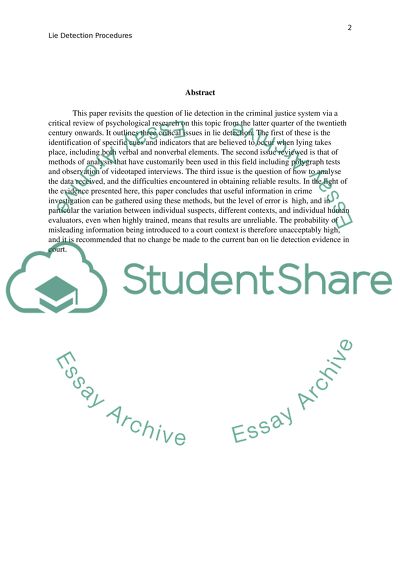Cite this document
(“Lie Detection Procedures with Recommendations on their Suitability for Essay”, n.d.)
Retrieved de https://studentshare.org/psychology/1391479-lie-detection-procedures-with-recommendations-on-their-suitability-for-use-in-court
Retrieved de https://studentshare.org/psychology/1391479-lie-detection-procedures-with-recommendations-on-their-suitability-for-use-in-court
(Lie Detection Procedures With Recommendations on Their Suitability for Essay)
https://studentshare.org/psychology/1391479-lie-detection-procedures-with-recommendations-on-their-suitability-for-use-in-court.
https://studentshare.org/psychology/1391479-lie-detection-procedures-with-recommendations-on-their-suitability-for-use-in-court.
“Lie Detection Procedures With Recommendations on Their Suitability for Essay”, n.d. https://studentshare.org/psychology/1391479-lie-detection-procedures-with-recommendations-on-their-suitability-for-use-in-court.


